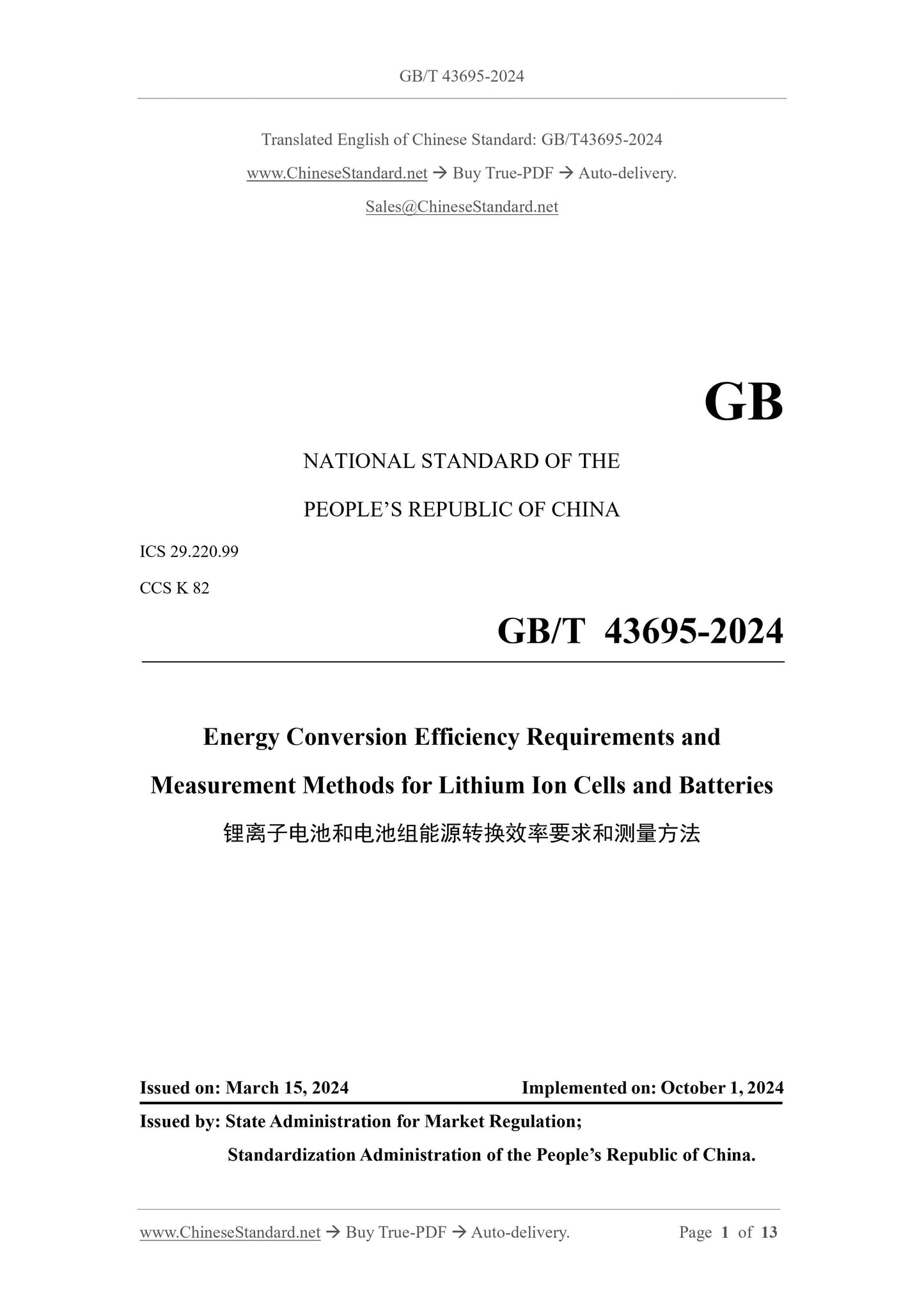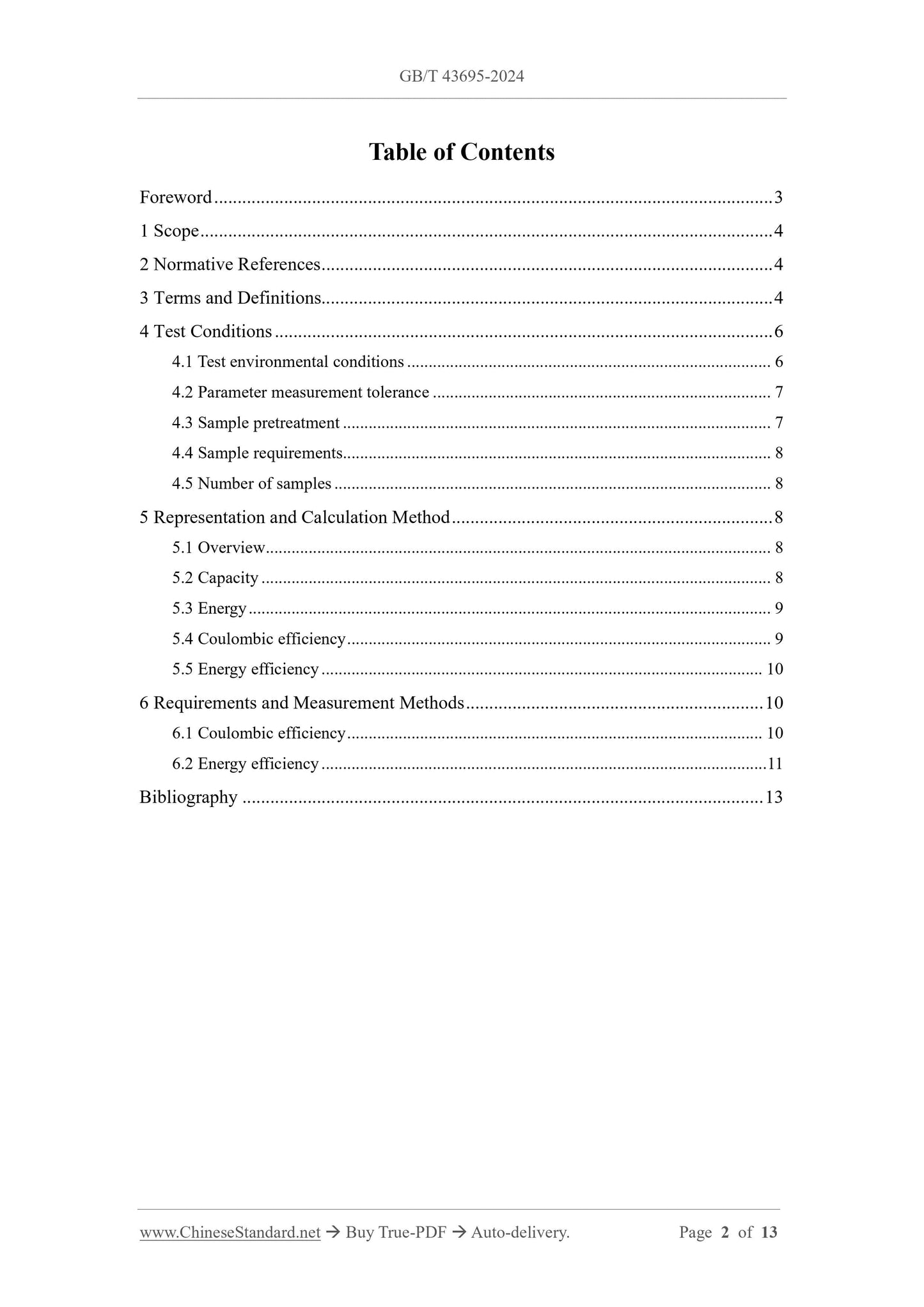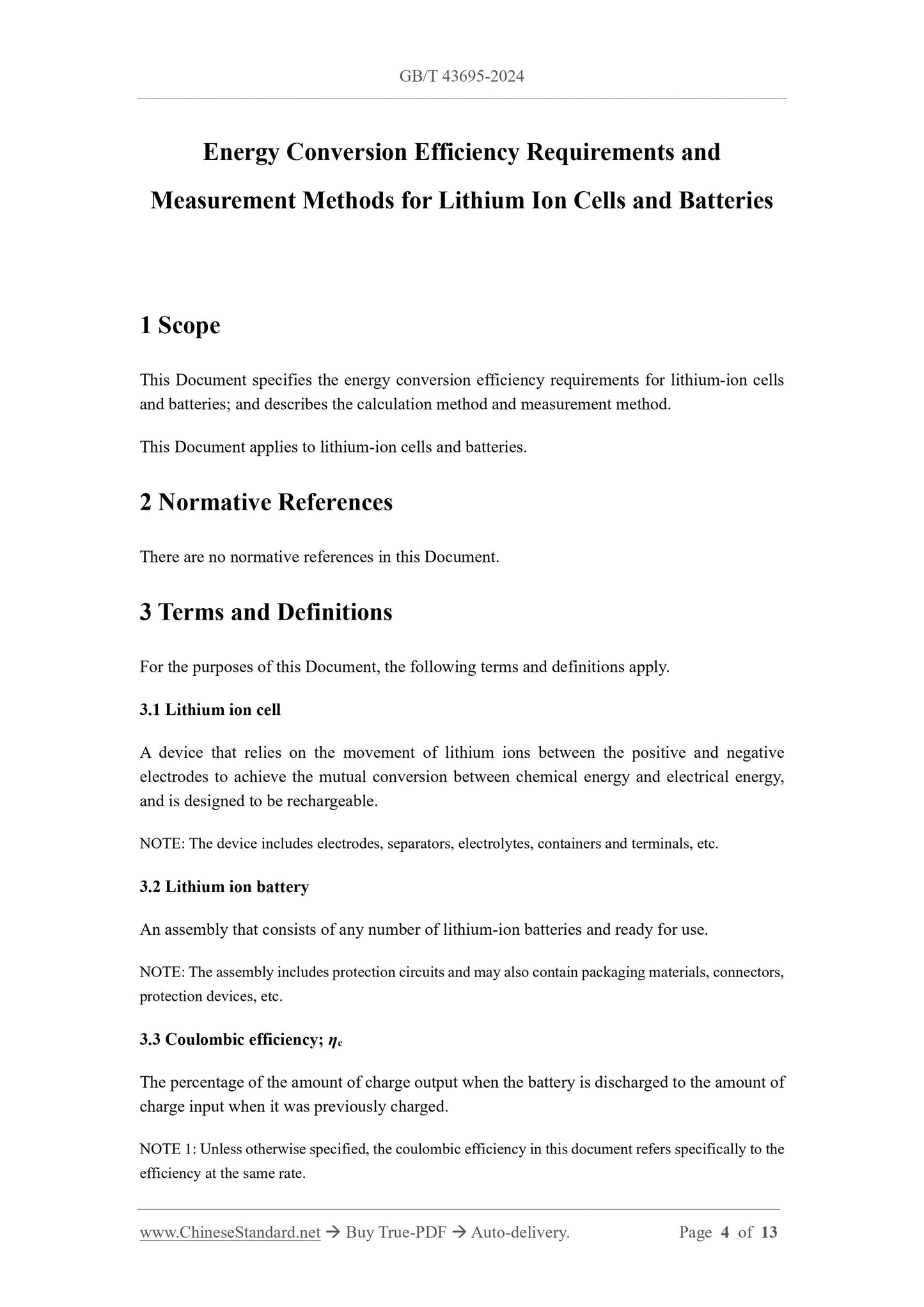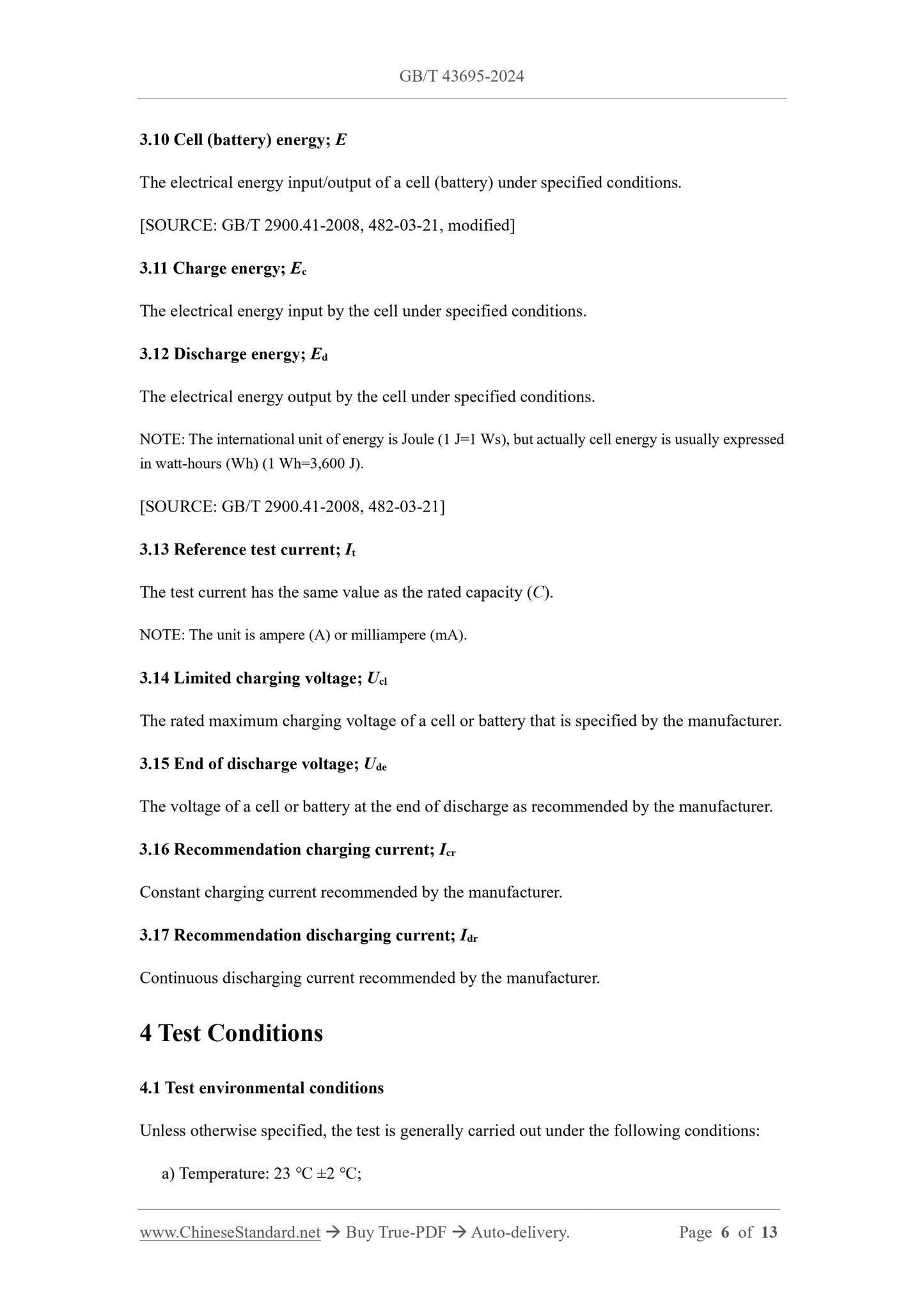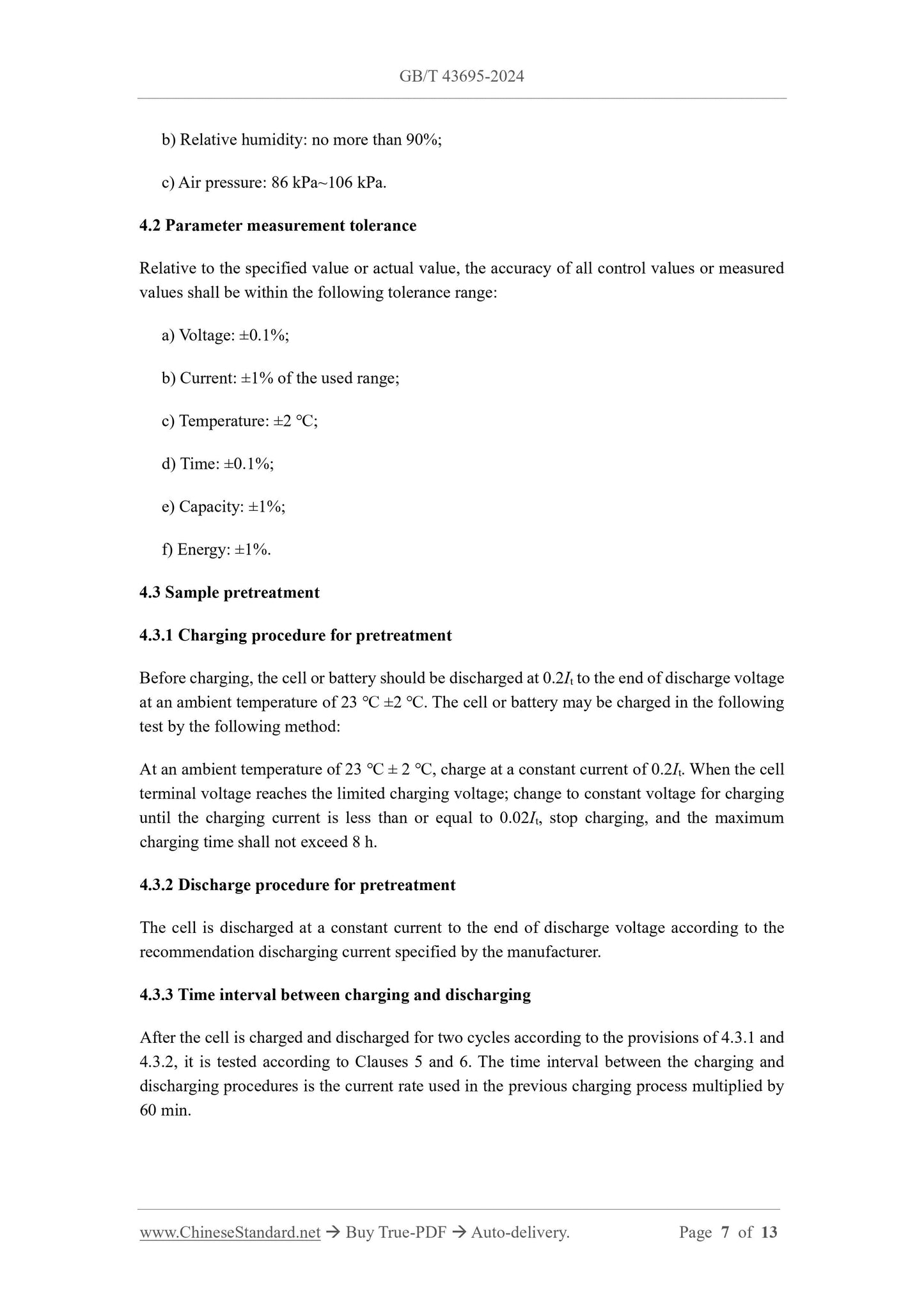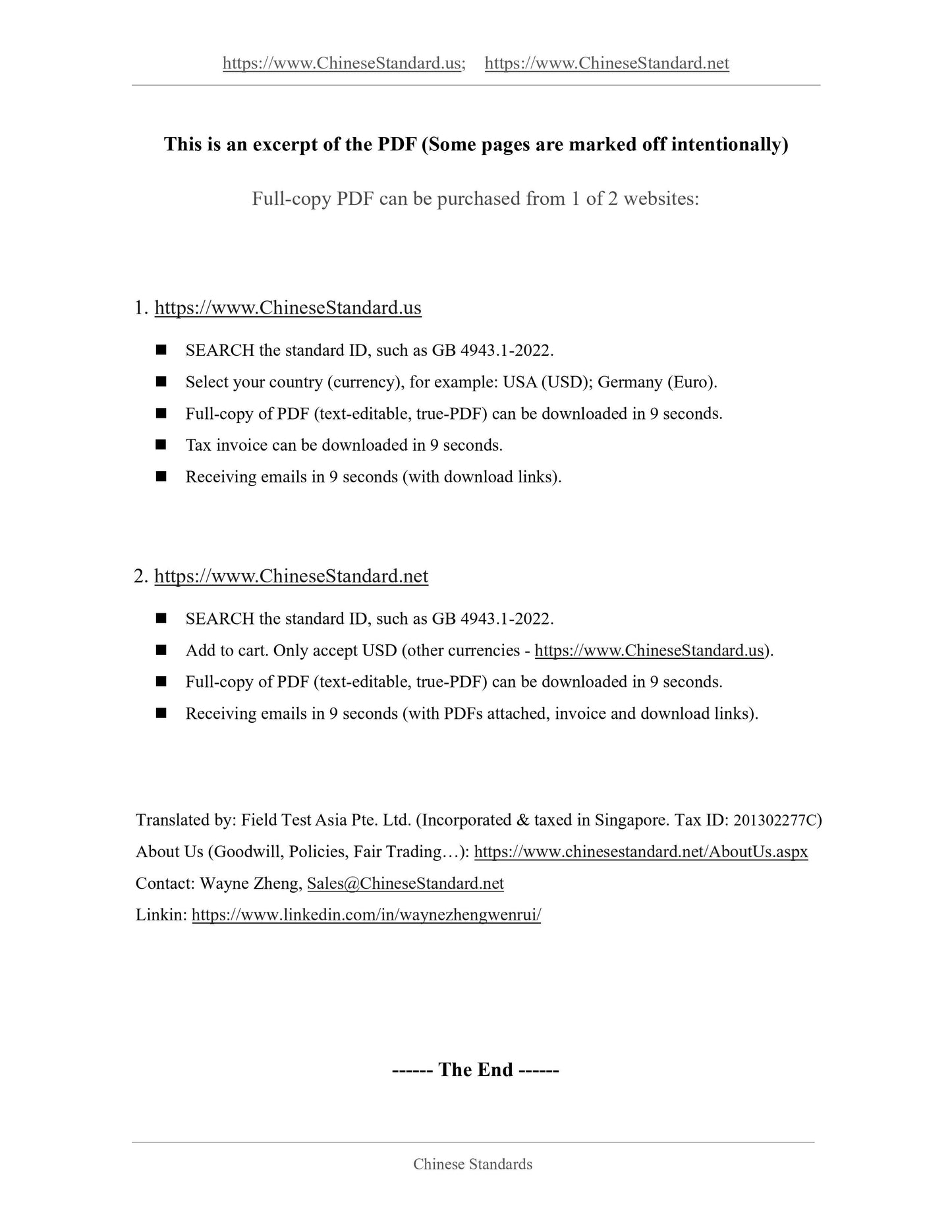1
/
of
6
www.ChineseStandard.us -- Field Test Asia Pte. Ltd.
GB/T 43695-2024 English PDF (GB/T43695-2024)
GB/T 43695-2024 English PDF (GB/T43695-2024)
Regular price
$230.00
Regular price
Sale price
$230.00
Unit price
/
per
Shipping calculated at checkout.
Couldn't load pickup availability
GB/T 43695-2024: Energy conversion efficiency requirements and measurement methods for lithium ion cells and batteries
Delivery: 9 seconds. Download (and Email) true-PDF + Invoice.Get Quotation: Click GB/T 43695-2024 (Self-service in 1-minute)
Newer / historical versions: GB/T 43695-2024
Preview True-PDF
Scope
This Document specifies the energy conversion efficiency requirements for lithium-ion cellsand batteries; and describes the calculation method and measurement method.
This Document applies to lithium-ion cells and batteries.
Basic Data
| Standard ID | GB/T 43695-2024 (GB/T43695-2024) |
| Description (Translated English) | Energy conversion efficiency requirements and measurement methods for lithium ion cells and batteries |
| Sector / Industry | National Standard (Recommended) |
| Classification of Chinese Standard | K82 |
| Classification of International Standard | 29.220.99 |
| Word Count Estimation | 14,19 |
| Date of Issue | 2024-03-15 |
| Date of Implementation | 2024-10-01 |
| Issuing agency(ies) | State Administration for Market Regulation, China National Standardization Administration |
Share
